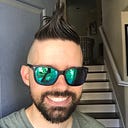For the love of image processing
Summer of 2004, I remember very clearly I had a plan. I had taken Communication Theory in the previous spring semester, and with that prerequisite, I could take some higher level class. Communication Theory was a senior level course already, and I took it as a sophomore. I’m not sure why professors let me do stuff like that, but I decided to boldly accelerate my education and challenge myself. I mapped out my plan to finish my masters degree by the time I had finished my bachelors degree. It required very heavy course load for 6 straight semesters.
The first semester of my Junior year, I took 20 credits which were spread across sophomore, junior, senior, and graduate levels. I took image processing because it sounded challenging. I was hungry for a challenge especially something that required a lot of math. I was not disappointed. The class was fun and exciting. The project (lane line detection) was very hard. I worked many weekends on that project just because I was passionate about it.
The book Digital Image Processing by Gonzalez and Woods became the most read book out of all of my college books. I marked it up with pen and sticky notes. I memorized where key parts were located. I read almost for pleasure to find new ways to solve difficult problems. This was quite amazing considering I rarely read my college books, and some, I never even opened.
I decided I wanted to do image processing as a career, and I turned every class project into some kind of image processing project. The downside was that any class not related to image processing became quite boring to me. One of the other byproducts of this experience was learning Matlab. I became quite proficient, and I fell in love with the ease that I could learn Matlab. It seemed to have the very best help menu at the time, and while the internet has greatly helped for learning C++ and python, Matlab is my first love.
At Notre Dame, I took the Graduate Algorithms course, and I fell in love all over again. The problem sets were challenging, the answer never came immediately, and it was puzzles galore. I accomplished my plan to finish my masters and bachelors in 4 years, and I was ready to go to more graduate school and a shift into computer vision. I built a 3D Face Scanner (Static Light Screen Scanner), and I did a lot of data collection, 3D reconstruction, and 3D face recognition.
Now, as I’ve been in the field for some years, I do not regret pursuing image processing and computer vision. Computer vision seems to be having its heyday at the moment, and I’m excited by how many people are joining the field.
If you like, follow me on Twitter and YouTube where I post videos of espresso shots on different machines and espresso related stuff. You can also find me on LinkedIn.
Further readings of mine:
Staccato Espresso: Leveling Up Espresso
Coffee Solubility in Espresso: An Initial Study
Espresso Simulation: First Steps in Computer Models
The Tale of the Stolen Espresso Machine
Affordable Coffee Grinders: a Comparison
